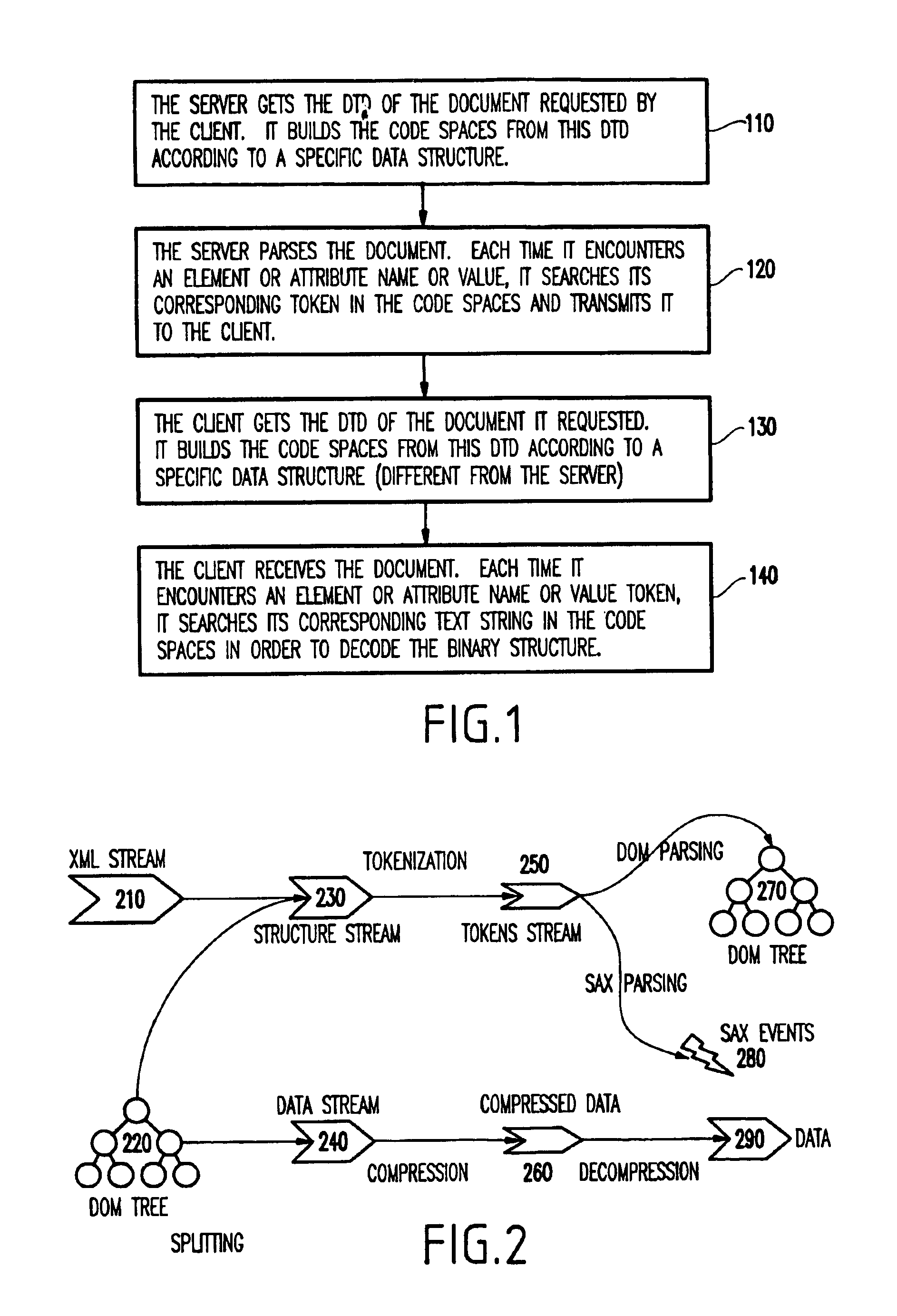System and method for schema-driven compression of extensible mark-up language (XML) documents
a mark-up language and schema-driven technology, applied in the field of efficient compression algorithm for xml (extensible mark-up language) documents, can solve the problems of inability to easily reassemble documents, (if not all) structural information cannot be retrieved without prior decompression, and conventional methods perform poorly on relatively small documents. , to achieve the effect of reducing the number of documents, reducing the number of schemas, and improving the compression ra
- Summary
- Abstract
- Description
- Claims
- Application Information
AI Technical Summary
Benefits of technology
Problems solved by technology
Method used
Image
Examples
Embodiment Construction
[0035]Referring now to the drawings, and more particularly to FIGS. 1-9, there are shown preferred embodiments of the method and structures according to the present invention.
[0036]Generally, the invention provides an efficient compression algorithm for XML documents.
[0037]As mentioned above, ZLIB algorithms are known for text data. As XML documents are compressed, the structural information will be kept in the compressed form so that the documents can be easily reconstructed. However, such compression and reconstruction in inefficient. Given that the lower bound on the compression size is what can be obtained by applying ZLIB where ZLIB loses all structural information, the invention provides a lossless compression algorithm that gets as close as possible to ZLIB.
[0038]With the invention, it is possible to separate markup (structure) and non-markup (data), and compress the non-markup component using ZLIB and the markup component using binary encoding. It is noted that binary encodi...
PUM
 Login to View More
Login to View More Abstract
Description
Claims
Application Information
 Login to View More
Login to View More - R&D
- Intellectual Property
- Life Sciences
- Materials
- Tech Scout
- Unparalleled Data Quality
- Higher Quality Content
- 60% Fewer Hallucinations
Browse by: Latest US Patents, China's latest patents, Technical Efficacy Thesaurus, Application Domain, Technology Topic, Popular Technical Reports.
© 2025 PatSnap. All rights reserved.Legal|Privacy policy|Modern Slavery Act Transparency Statement|Sitemap|About US| Contact US: help@patsnap.com



